Many landscape paintings miss this key ingredient
Backlit beach 12x12" Acrylic on Board

Terengganu, Malaysia
Your next step to enhancing your paintings with expressive skies
We'll focus on improving on photos for paintings, designing with your heart, understanding back lighting and painting dramatic towering clouds.
This is a small lesson from a larger course that I'm building, which will be called Painting Expressive Skies. I expect that to take me 6 months or more. I'm already three months into it. I thought it'd be nice for you to see this one for free, just to whet your appetite for painting expressive skies, and also just to get some feedback from you. If you have any constructive criticism, I'd love to hear from you.
This demo is in acrylics but it's fine for oils too.
Just 6 steps
I’ll guide you all the way.
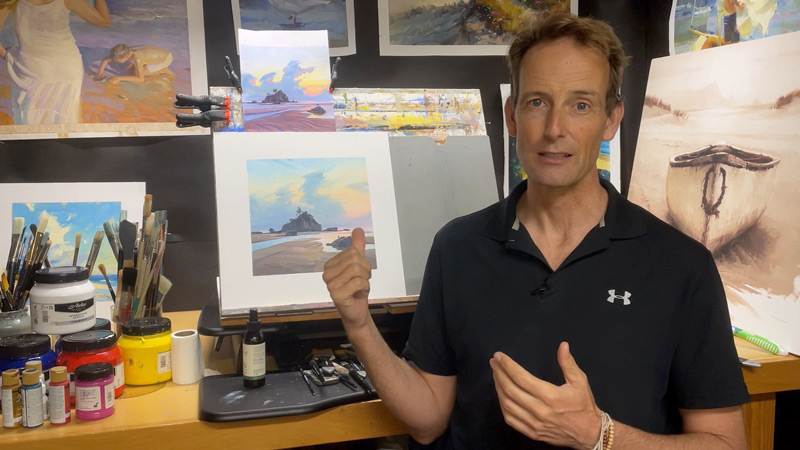
Design
Our job as artists is to bring people's attention to what we find beautiful. In order to do that you need to first identify what those things are for you, and then enhance or exaggerate them. In this one it was towering clouds and that beautiful sky gradation.
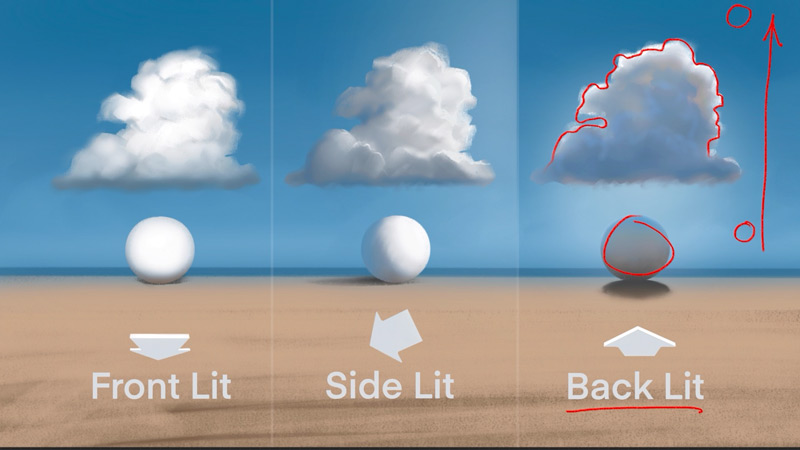
Back Lighting
When objects are between you and the sun, that's back lighting. Objects are mainly in shadow, casting shadows towards you, and some objects such as clouds and flora will have rim-lighting around their edges. The sky will tend to show a strong gradation from light warm closer to the sun to cool dark further away from the sun.
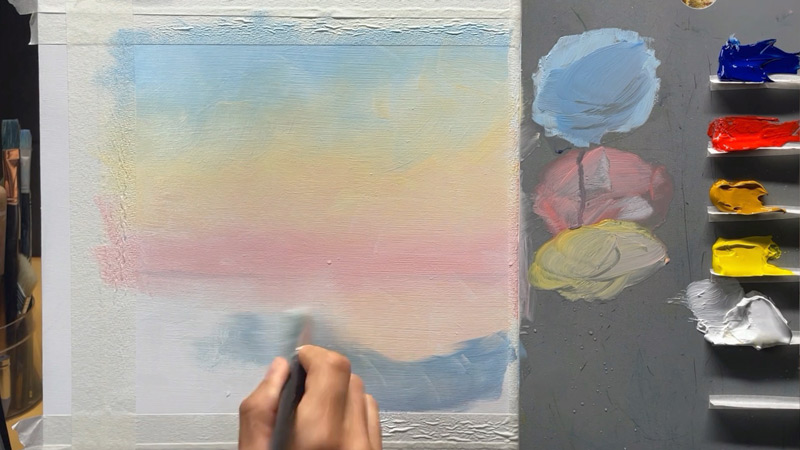
Sky
The sky gradation is the first building block and we'll be 'painting into a couch', which means painting into a wet layer of white paint. You can add more warmth into the sky gradation to enhance the feel of the sunset light. You can also add more vibrancy to the sky simply by adding more colour.
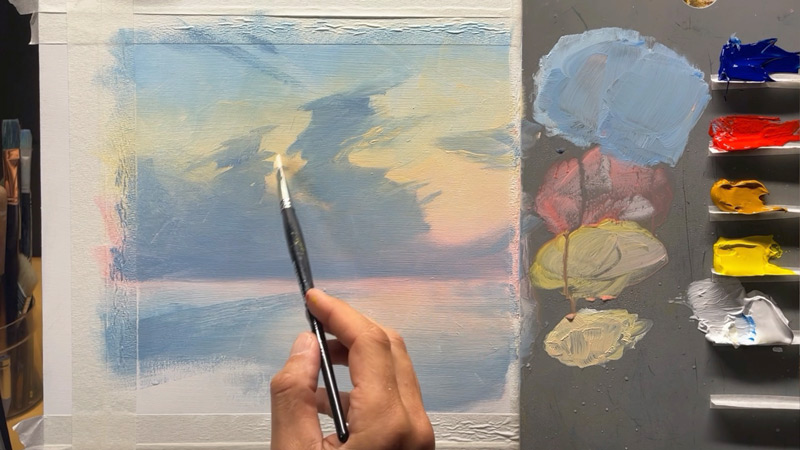
Expressive Clouds
Here's your chance to practice making more variety in your paintings, which makes them more interesting to paint and more interesting to view.
Create variety in:
Shapes - big vs small, complex vs simple.
Colour - warm vs cool, vibrant vs greyed.
Edges - soft vs hard.
Texture - smooth vs rough, thin vs thick.
You need all that variety to keep things interesting and expressive.
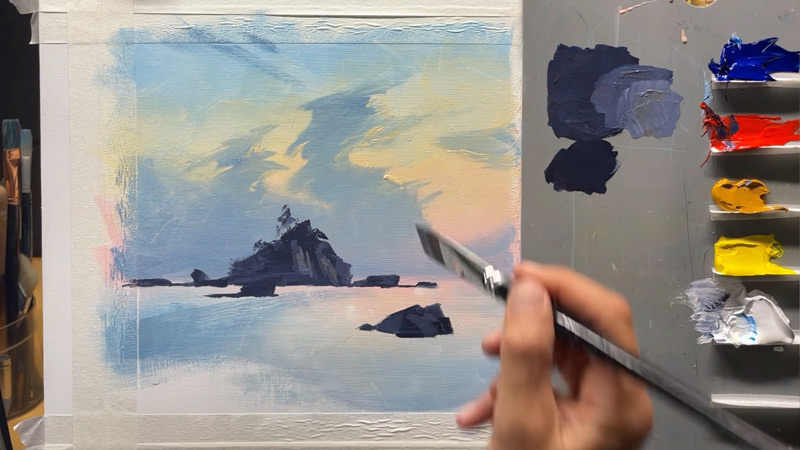
Rocks in shadow
Using a large synthetic flat brush you can create beautifully crisp, straight edges - perfect for rocks. You'll find that if you add too much light into the shadows it will ruin the illusion, but you can always paint the shadow back in.
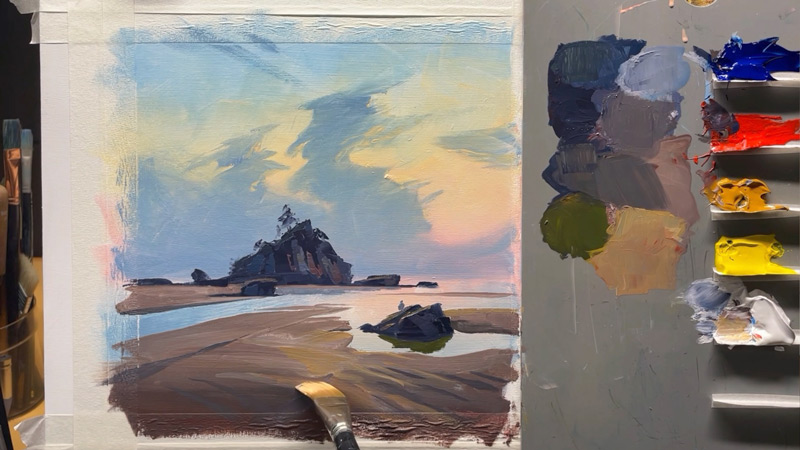
Wet Sand
Using that same big flat brush you'll add a soft foreground shadow first which will help draw the eye into the centre. Crisp shapes of shadow and light add more form and lead us to the towering clouds.
I'll take you step by step through this whole rich process and you can choose which parts you'd like to try out in your own work.
Enjoy!
What materials are used in this class?
Atelier Interactive Acrylics
Phthalo Blue
Ultramarine Blue
Napthol Red Light / Cadmium Red Light
Brilliant Magenta
Yellow Ochre
Arylamide Yellow Light / Cadmium Yellow Light
Titanium White
Canvas
12x12" MDF Panel with 3 coats of acrylic undercoat.
You could use a canvas panel or anything you prefer.
Brushes
Rosemary & Co. Richard Robinson Brush Set
Palette knife
Paper towels
Stay-wet palette
Water spray bottle
Student Critiques
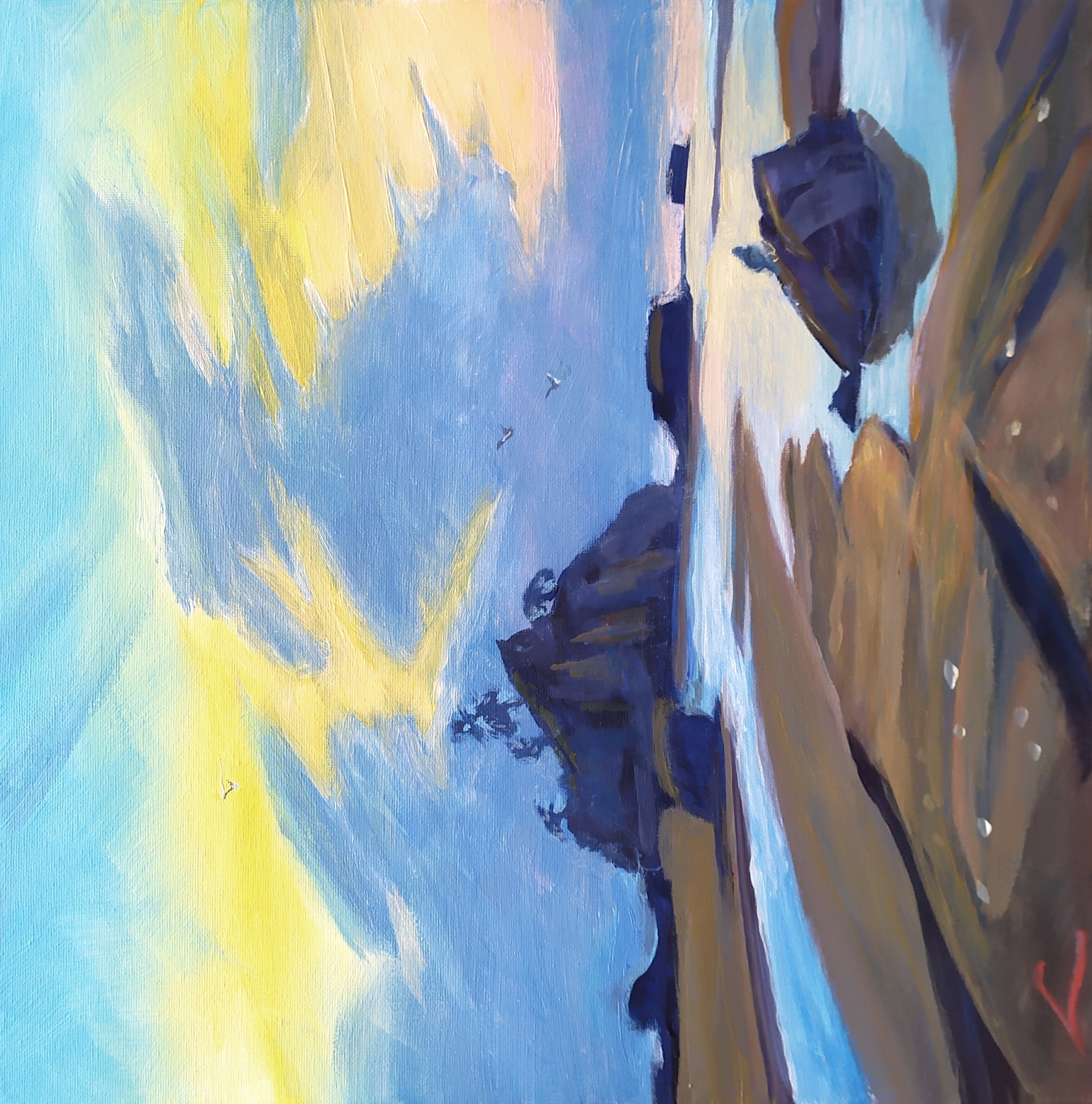 Coastal landscape, acrylic with oil glazing, canvas, 39 cm x 39 cm
Coastal landscape, acrylic with oil glazing, canvas, 39 cm x 39 cm
Artist: Elena Sokolova
Nice work Elena. I like the extra vibrancy you have put in the sky and its reflections. You've achieved a good subtle spotlight effect on the foreground sand and you've used bold expressive brushwork. Good job!
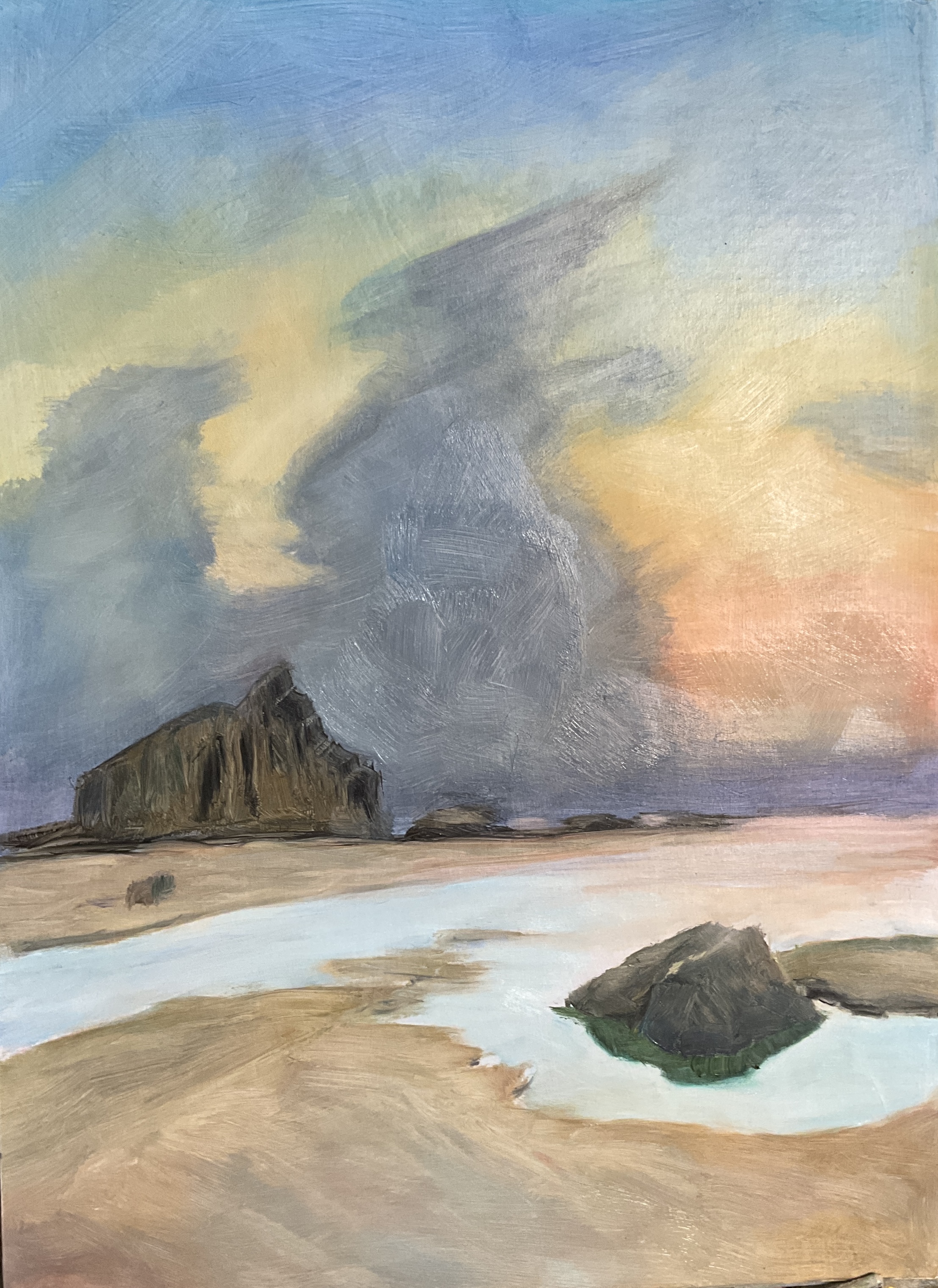
'Sky' Artist: Alan Swaby
Great work in the clouds and the sky, Alan. Also really nice crisp organic shapes in the foreground. I would like to see you finish off the island though with some trees and a little more interest.
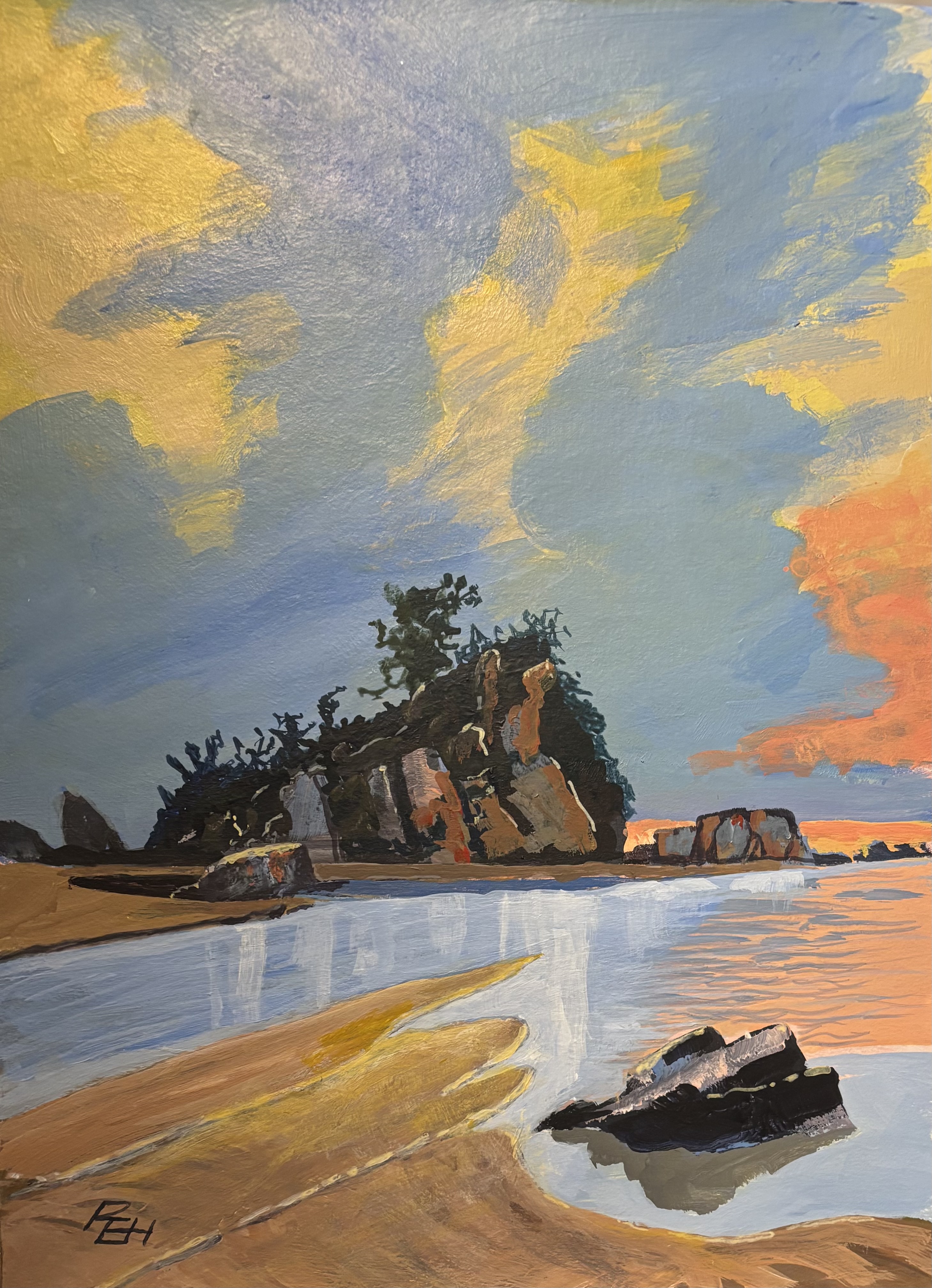
"Expressive Skies" in acrylics by Eric Hillmer, Toronto, ON Canada.
Really good work on creating more interest in the rocks here Eric which is something I felt was lacking in my own piece.
Just be careful when you're adding lights into shadow areas though. This is supposed to be a backlit situation so none of the rocks in the shadow areas should have lights on them. Adding lights there changes the lighting situation, and the main thing we need to do if we want to paint more realistic landscapes is to maintain a consistent lighting situation across the whole scene. In other words, where is the light coming from, where are the shadows and where are the lights?
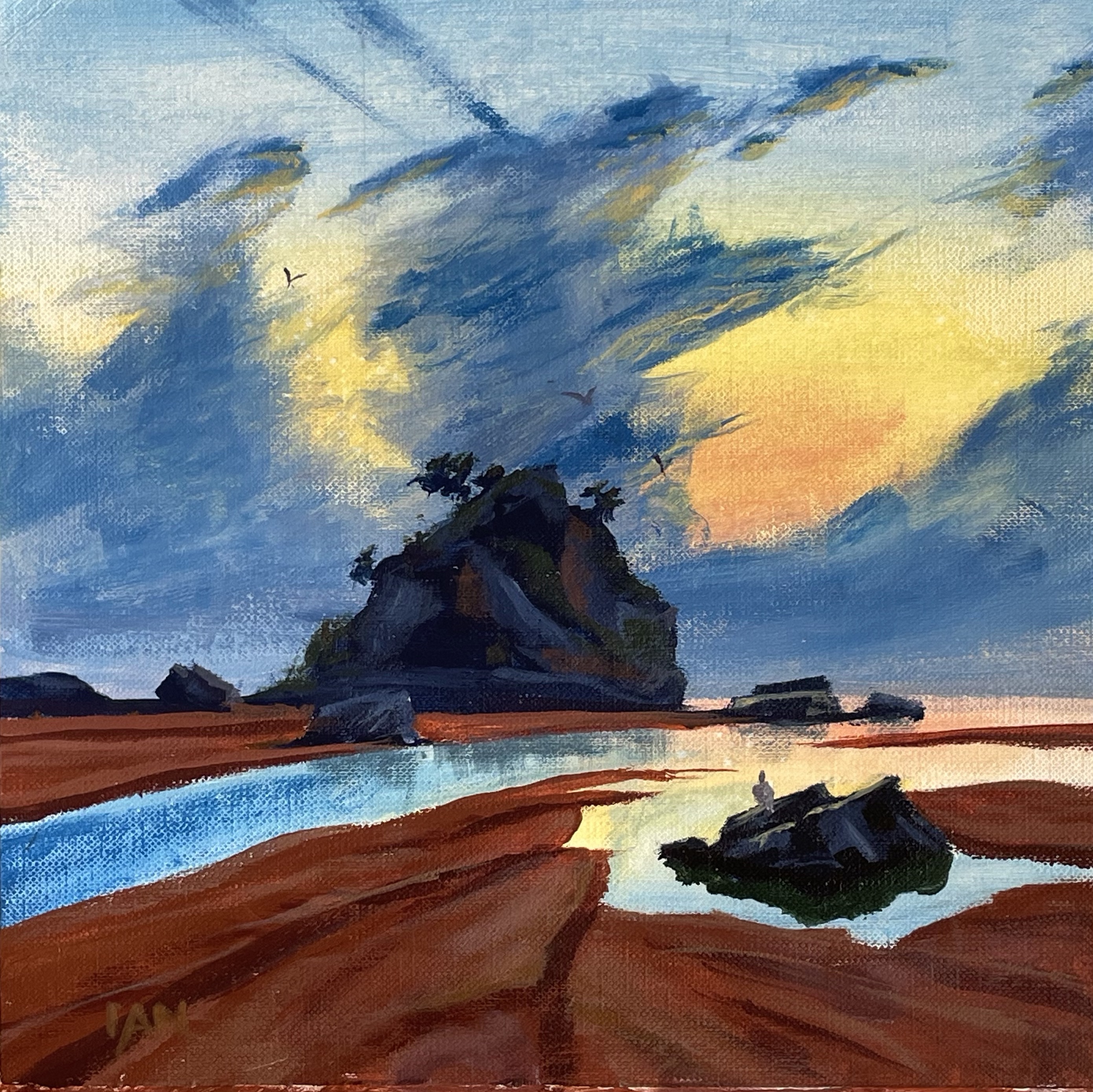
'Exhausting Skies! Reminds why this is my second ever acrylics. Dry within moments so no time to stop, rest and reflect.'
Artist: Ian States
Ooh - very dramatic! Nice one, Ian. Intensifying the colours in this and darkening the mid values has created a much more dynamic painting. Congratulations!

Expressive Skies-Backlight
Artist: Nancy Newton
Lovely contrast here between the crisp sharp shapes and the billowing softness of the clouds. Nice! Only thing I'd implore you to do is use a finer brush for those flying gulls.
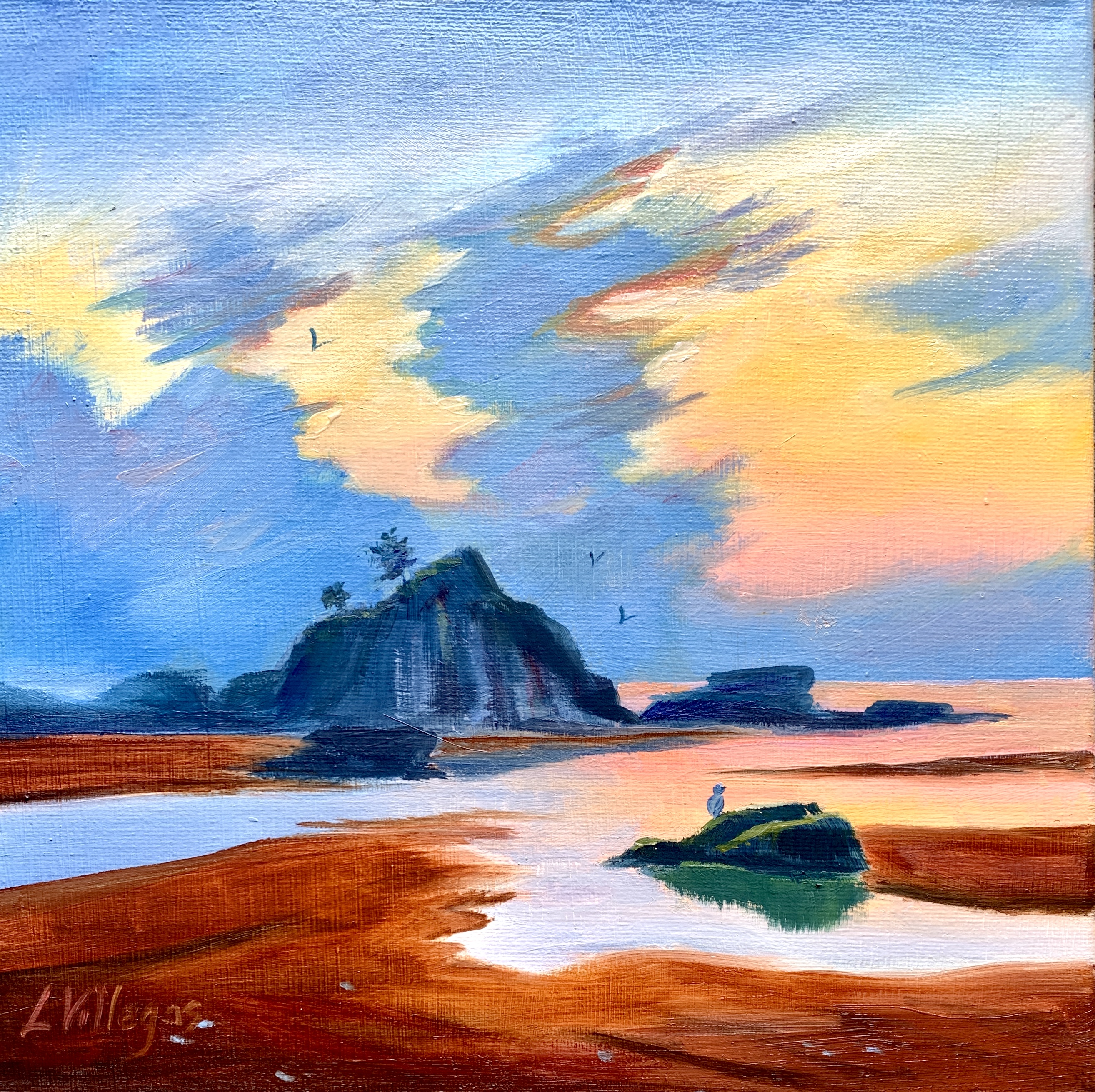
Expressive Skies Back Light - Oil on 12 x 12 canvas
Artist: Louise Villegas
Wow that's some punchy colour there Louise! Great cloud shapes, good drawing of the rocks, clean colour. If you grey the green reflection of the rock a little it'll look more natural. (Just add some red). Similarly, if you grey down the orange sand a little (just add blue) it'll look a little more natural too.
Get the full painting lesson here: https://mypaintingclub.com/lessons/257-Expressive-Skies-Back-Lighting

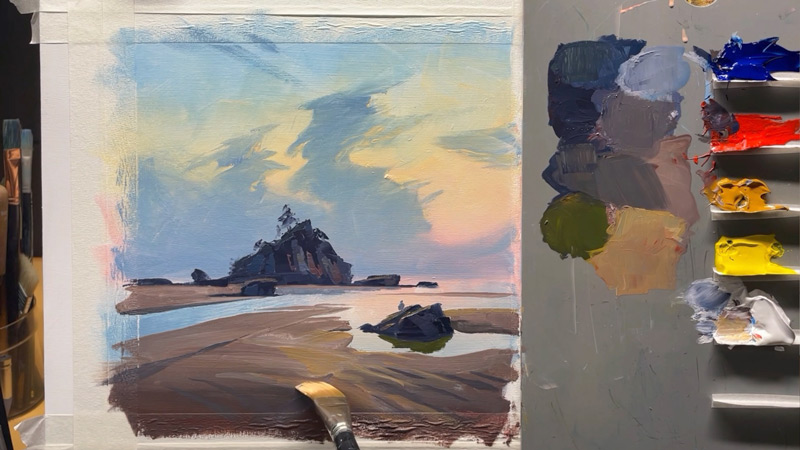
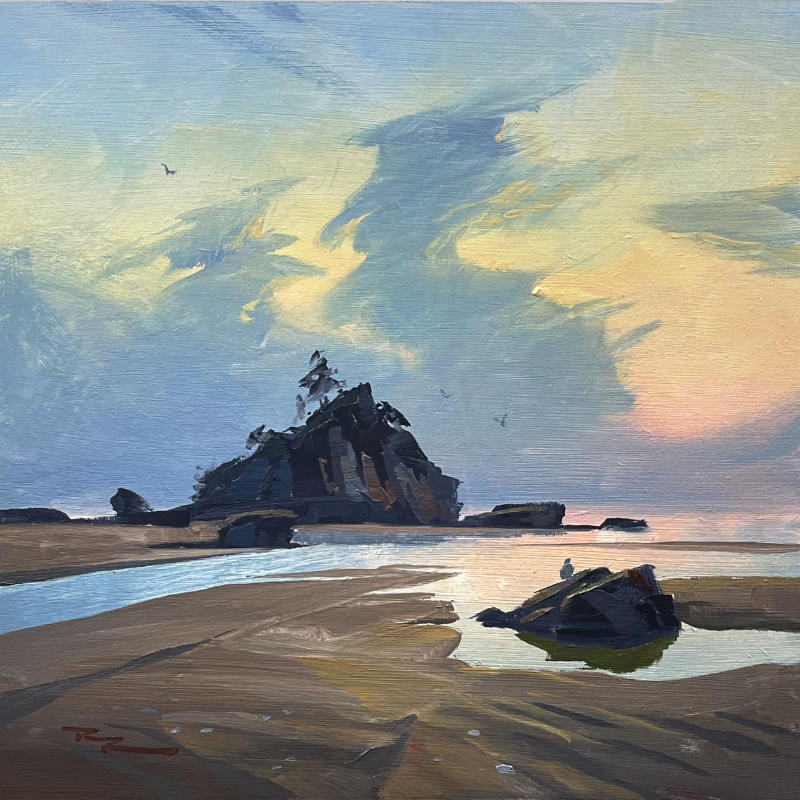
Login to your account to post a comment.